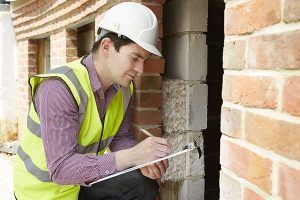Remodeling, renovation, or repairing after water damage are just some of the reasons you may need to remove old insulation. Most insulation doesn’t have an unlimited lifespan. Over time it can degrade, introducing odors and allergens into your structure.
Old insulation is usually removed in preparation for fresh material. Removal needs to be handled carefully so the area is ready for new insulation. This could include spray foam, cellulose blown-in insulation, along with other materials. Some loose insulation can be vacuumed out, but other types need special equipment or processes.
Some individuals attempt to remove insulation on their own. DIY insulation removal is possible but is difficult to accomplish safely. Professional insulation technicians have training and experience that can’t be duplicated through online research. Equally important is understanding local building ordinances and environmental regulations.
Insulation removal can be hazardous, and doing it yourself may expose you and others in the property to toxins and harmful bacteria. Protective gear and experience are required for safe removal. Professionals have special training and equipment to correctly remove all types of old insulation. The Proinsulate team has years of experience in the Edmonton area and can help you decide the best path to safely remove any type of insulation. Residential or commercial, no matter the kind of insulation you are working with, contact our professionals for an assessment of your needs. We can help you avoid costly DIY mistakes.

Why Insulation Removal is Necessary
You may decide to remove old insulation for a variety of reasons. Energy savings, water, and rodent damage are just some good reasons to discard insulation. Insulation can degrade over time, particularly blown-in cellulose. Age can lower insulation efficiency which can lead to higher utility bills and a noisy environment.
Even if your old insulation is in good shape, older material may not have the same efficiency and benefits as more modern solutions. Benefiting from modern insulation will require first removing any old material and preparing the structure for upgraded protection. Depending on what type of insulation you plan to install, special or more thorough removal processes can be necessary.
If you are planning to switch to spray foam insulation, the area will need to be completely cleaned and free from old material. Spray foam sticks to surfaces and the target area must be free of debris for best adhesion. Improperly prepared surfaces can cause spray foam to not adhere correctly, preventing an airtight seal.
A professional Assessment is an Important First Step
Having a professional assessment can help you plan for successful insulation removal. A technician can determine what type of insulation is present and the best way to remove it. They will also be able to point out any hazards and environmental regulations you’ll need to be aware of. Even if you don’t decide to use a professional for insulation removal, an assessment will help you make informed decisions as your project moves forward.
Professionals will be able to identify the presence of asbestos. Before 1990, asbestos was used in commercial and residential construction in Canada. While insulation may not always contain asbestos, surrounding structures can use this dangerous material. Disturbing asbestos-containing materials can present serious health hazards, any work must be done carefully and correctly.
Different Insulation Removal Methods
Some types of insulation removal are easier than others. Blown-in insulation can often be vacuumed out, and fiberglass batt insulation can be removed by hand with proper protective equipment. Removing spray foam insulation can be a challenge and needs manual scraping to fully remove it from surfaces.
In many cases, technicians will use powerful vacuum machines to remove waste insulation and collect it for disposal. These machines are critical for effectively removing blown-in insulation from ceiling joists and walls and ensuring the waste material is disposed of properly.

Removing Blown-In Insulation
Blown-in insulation is common in both residential and commercial buildings and can be composed of different types of material such as treated cellulose and loose-fill fiberglass. Installation involves using blowers to place insulation in ceiling joists and between wall studs. Removal essentially happens in reverse: large vacuum units are used to remove old insulation and place it in bags for recycling or disposal.
Removing blown-in insulation in ceiling areas is generally simple. Vacuum hoses are routed to draw material out from between ceiling joists and any other cracks or crevices. Workers often have easy access to these areas and removal is fast. The main challenge comes from the volume of material, which can be substantial.
In walls, removing blown-in insulation presents more challenges. Often this type of material has been installed at construction time and the walls have been closed in so now workers won’t have easy access for removal. If you are replacing with spray foam insulation you’ll likely need to remove drywall for complete access to wall cavities. This provides a simple way to remove old loose fill. While this is a common situation your structure may need a different solution. A professional assessment is needed to know for sure.
Removing Fiberglass Batt Insulation
Fiberglass batt is a common type of insulation made from sheets of insulation that may include a vapor barrier to control moisture. This insulation can be rolled up and removed by hand or cut into smaller sections for easier handling. Fiberglass insulation can irritate the skin, eyes, and respiratory system. Before handling this material you’ll need personal protection which includes gloves and a full face respirator. The hazard presented by fiberglass means that old insulation can’t be thrown away. If you are removing old or damaged insulation it’s necessary to arrange for disposal or recycling.
Removing Spray Foam Insulation
The first step to removing spray foam insulation is deciding how much to remove. Spray foam is a durable form of insulation that adheres to surfaces. It can be difficult to remove without special tools and know-how. With some types of damage, it can be possible to remove only the contaminated section for replacement with new spray foam. Some DIYers will try to repair damaged spray foam insulation by simply adding a second layer. This can often trap moisture leading to greater structural problems.
The removal process is mostly manual. Old, cured spray foam must be broken up and scraped from surfaces. This is difficult to do correctly and can result in damage to wall boards or other structural components. As with most types of insulation, this is a hazardous process that requires proper personal protective equipment.
If you are considering the removal of spray foam insulation it’s best to get a professional assessment. Complete removal may not be necessary. Professionals will be able to evaluate the insulation quality, damage, and surrounding structure which can be at risk of damage during removal work.
Frequently Asked Questions about Insulation Removal
Proinsulate Service Areas
Our team works in Edmonton and surrounding areas including Stony Plain, Spruce Grove, St. Albert, Sherwood Park, Fort Saskatchewan, and Leduc. If you have any questions about an insulation project in your area, don’t hesitate to reach out to our team.
CITIES WE SERVE
COMMUNITIES WE SERVE
COMMUNITIES WE SERVE
COMMUNITIES WE SERVE
What our Clients Say
Similar Insulation Services


Commercial Insulation
Create a safe and effective working environment with better thermal and fireproof protections, effective moisture and vapour barriers and reduce unnecessary noise pollution




























